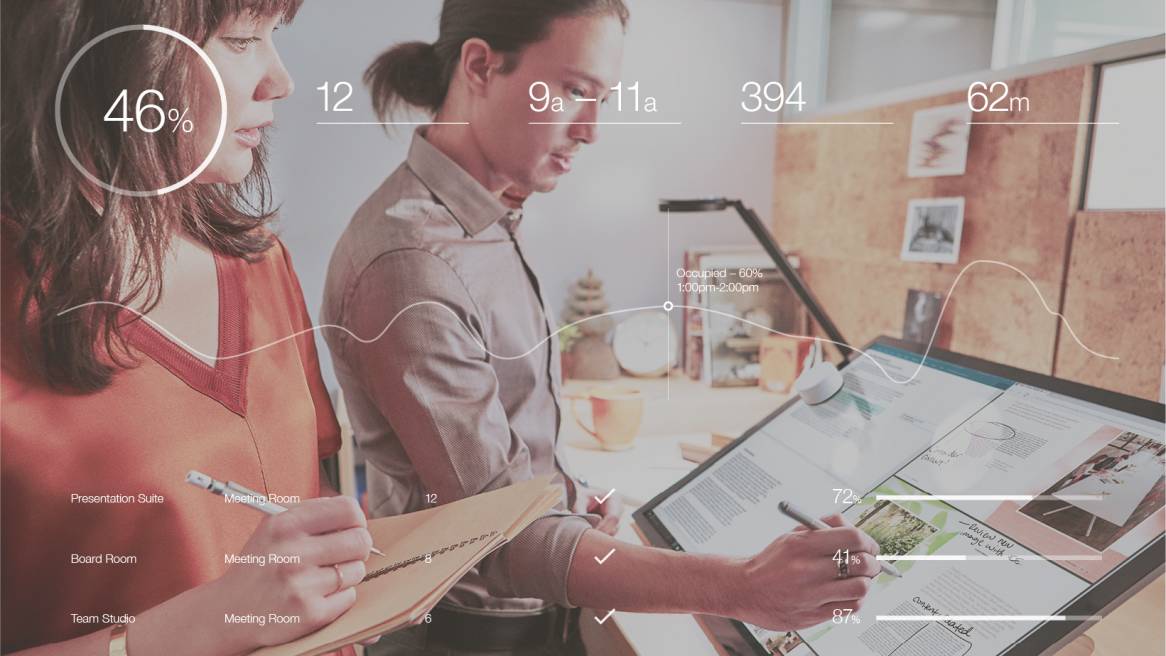Bring Actionable Data to the Workplace
With so much data available, why is it still difficult to understand how an organization’s biggest assets, people and spaces, perform?
The digital economy is transforming where we live and where we work. The Industrial Internet of Things (IIoT) is helping manufacturers recognize problems on factory lines in real time. Marketers can predict likely customers based on past behavior. Analysts can estimate new product sales based on everything from previous performance to seasonal selling patterns.
To compete in today’s complex global landscape, many organizations are quickly evolving into data companies — learning how to collect, analyze and interpret valuable data to react more quickly and more effectively to changing market forces. Many companies wouldn’t think of investing in a new product, service or location without convincing data to back up the decision.
STEELCASE WORKPLACE ADVISOR
Get started now with easy-to-understand, actionable data that empowers organizations to measure the effectiveness of the workplace.
Recently, Intel CEO Brian Krzanich, told Code Conference 2017, “At Intel, we don’t think of ourselves as a CPU company anymore. We think of ourselves as a data company.”
Measuring the Workplace
With data becoming prolific throughout organizations, why does it remain a challenge to understand how an organization’s biggest assets, people and spaces, perform? Whether a company is looking to understand and improve the effectiveness of their workplace, or to justify a large capital expenditure, data should be able to help.
Too often, these measurements are still being done manually. People walk through a space once or twice a day and count occupancy or organizations gather anecdotal evidence from a manager who walks by a room that appears underutilized. These methods are unreliable, inaccurate, inconclusive and labor intensive.
Data-Driven Decisions
Some organizations have begun the move toward data-centric decision making by placing sensors in the workplace to collect occupancy data. CORENET recently covered the journey toward digitization many corporate real estate (CRE) teams are undergoing.
“CRE teams that embrace the use of automation reap the rewards,” wrote CORENET. It cited building efficiency, better energy usage and regulatory compliance as well as “a workforce delighted with its workplace, and a more visible contribution to the enterprise.”
Sensors alone, however, are just the first step. Companies at the leading edge of this trend are finding they lack the ability to act on reams of workplace data without confidence in its accuracy and without an understanding of the insights behind the data.
Latest Technology Updates
Find out how data can transform your workplace to help people have a better day at work.
Data + Insights
Throughout its 105-year history, Steelcase has conducted research and observations to better understand how and where people do their best work. It’s with a rich understanding of people and where they work that Steelcase has begun exploring how big data can help organizations measure and improve their spaces.
Steelcase Workplace Advisor uses sensors to detect presence and occupancy in the workplace and send precision data to the Steelcase cloud platform built on Microsoft Azure. The Workplace Advisor Dashboard applies intelligence to make meaning from the data, enabling organizations to understand how the workplace is being used and how it can be made better.
For example, data may tell you a large conference room is rarely used. It appears to be an underutilized space. The solution, however, is not as clear. Additional intelligence from Steelcase can help reveal correlations between what’s in the room and whether or not people choose to use it. You may discover rooms with analog tools such as whiteboards are more frequently used. Other attributes such as video conferencing, standing height tables, natural light, capacity and whether or not the room can be booked are all able to become data points to help reveal how to create a better, more engaging workplace.
It’s this combination of data and insights that holds tremendous potential for organizations and their people. Big data can create better, more effective places. In turn, the people who work there will reap the benefits by having a workplace that supports their needs to do their best work.


